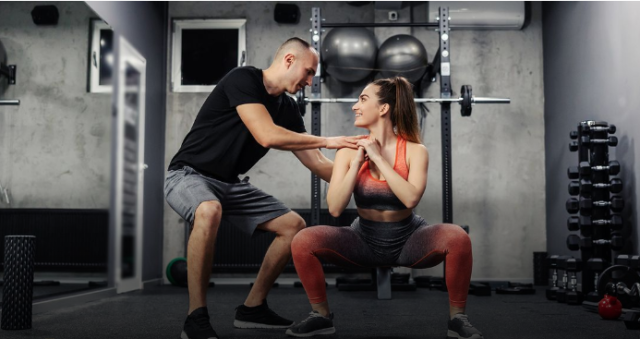Common squat mistakes that can lead to injury

Almost no workout is complete without squats. Unfortunately, beginner athletes often make mistakes when doing this exercise: some do not feel that the buttocks are working during squats, others are afraid to hurt their knees, and still others do not understand how to get the most out of doing a squat without additional weight.
How to squat correctly to pump up the buttocks
Watch the angle at the knee
The angle at the knee does not always have to be 90°, sometimes it is enough to leave it sharp. When you do a 90° squat, you tend to “save” your knee, pull your pelvis back, and often hyperextend your lower back. And for sure, while performing the movement, you continue to look in the mirror or at the trainer, also overextending in the cervical region.
By comparison, when you climb stairs, you don’t measure your knee flexion. Including when dancing or snowboarding. Training prepares us for the actions that we perform in everyday life: you do not need to measure the angle of flexion in the knee joint while doing a squat. The main thing is that the knee does not go to the toes.
Squat technique may vary
We are all different, each has its own characteristics of the structure and functioning of the musculoskeletal system. Of course, there are rules to follow. One of the main ones – squatting assumes that the body remains parallel to the lower leg. This does not happen to everyone and often not the first time. If the ankle is hard, the heels will come off the floor and the body will fall forward. Therefore, it is necessary to work on the mobility of the ankle and hip joints.
It is not necessary to warm up the knee joints for an effective squat.
We partially refuted this point above, but we will discuss it in more detail. The step begins with the foot, and, building a vertical position, fix the foot on three points of support: the base of the thumb, little finger and heel. This triangle will help to properly distribute the weight of the body and create the necessary foundation for the foundation when performing not only the squat, but also all movements on one leg.
Do prep exercises
Mobilization of the hip joints is an important point that leads to elastic buttocks. Our muscles do not work on their own, they are part of a huge system. It is the joints that determine the range of motion of our muscles. If at least one movement in the hip joints is limited, some of the gluteal muscles may not turn on: it does not have the necessary trajectory of movements. Even increasing the number of repetitions or adding weights in the form of dumbbells or kettlebells will not help here.
Therefore, mobility training should not be ignored. They help to maximize the use of the desired part of the body, which will “respond” to the exercise and quickly help to achieve beautiful elastic buttocks.
Do not squat as a warm-up
It is wrong to think that squats are an easy exercise that does not require special training. Even if you are a trained athlete and confident in your technique, there are nuances that will greatly increase the effectiveness of the squat. One of them is to roll out the foot: for this you need to perform a myofascial release.
Many people do not realize how much a well-developed foot affects the activation of the buttocks. Restrictions in the plantar part of the foot pull restrictions along the entire back line above – the stiffness of the muscles of the back of the thigh, hyperextension in the lower back and neck. Rigidity in these parts of the body blocks productive work with the buttocks and exacerbates the “pain”.
It is important to note that there are no bad and good exercises if you know how to perform them correctly. The main thing is to follow the execution technique, perform a warm-up and a hitch, fully recover and remember that the body needs constant movement.